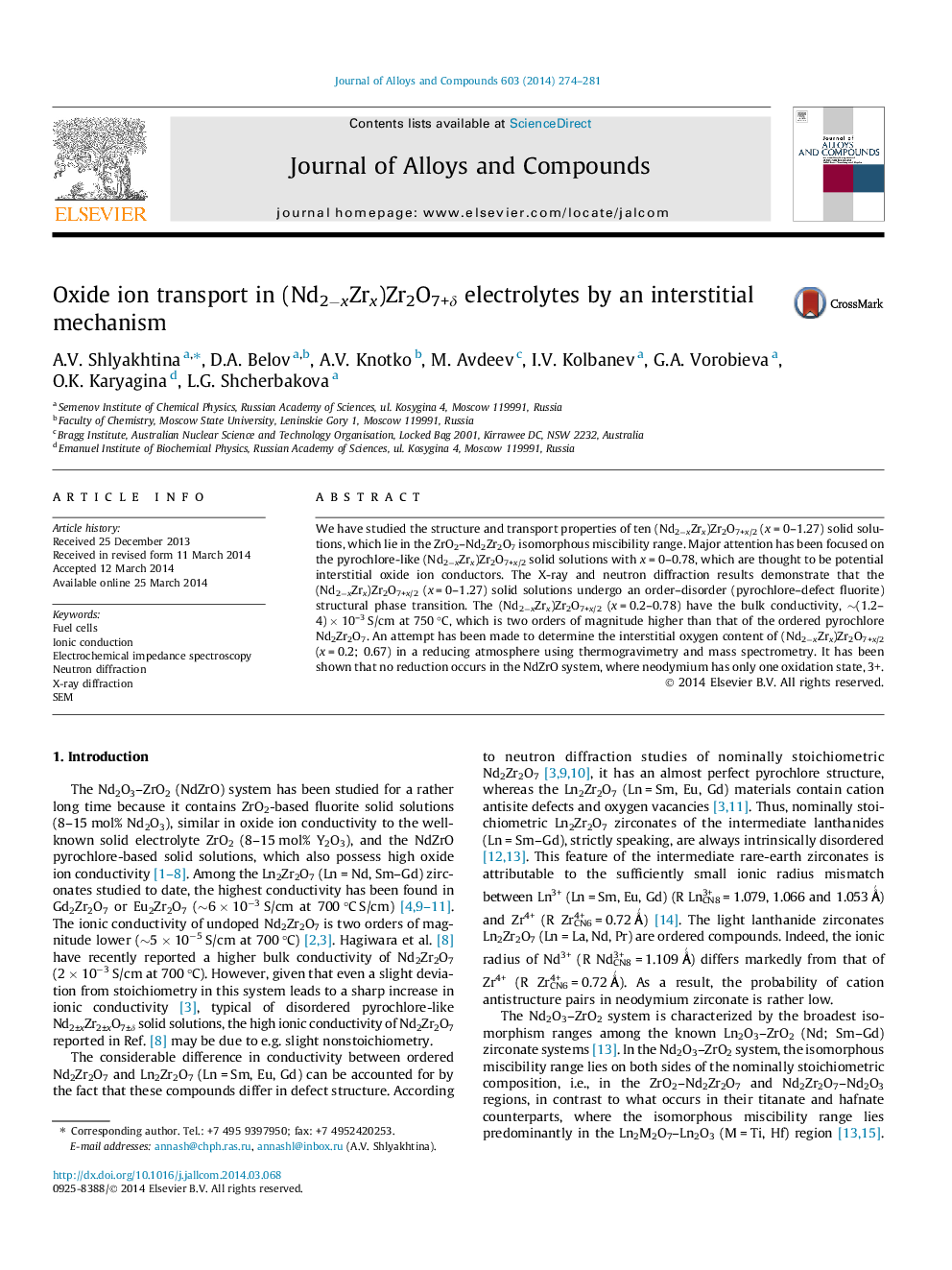| Article ID | Journal | Published Year | Pages | File Type |
|---|---|---|---|---|
| 1611202 | Journal of Alloys and Compounds | 2014 | 8 Pages |
•The structure and interstitial oxide ion conductivity of (Nd2−xZrx)Zr2O7+x/2 (NdZrO).•The 750 °C interstitial conductivity of NdZrO (0 < x ⩽ 0.78) is 1.2–4 × 10–3 S/cm.•In the NdZrO, Nd has only one oxidation state, 3+, and no reduction occurs in H2.•Order–disorder structural phase transition in the (Nd2−xZrx)Zr2O7+x/2 (x = 0–1.27).•NdZrO (0.32 ⩽ x ⩽ 0.48) pyrochlores contain up to 50% of cation antistructure pairs.
We have studied the structure and transport properties of ten (Nd2−xZrx)Zr2O7+x/2 (x = 0–1.27) solid solutions, which lie in the ZrO2–Nd2Zr2O7 isomorphous miscibility range. Major attention has been focused on the pyrochlore-like (Nd2−xZrx)Zr2O7+x/2 solid solutions with x = 0–0.78, which are thought to be potential interstitial oxide ion conductors. The X-ray and neutron diffraction results demonstrate that the (Nd2−xZrx)Zr2O7+x/2 (x = 0–1.27) solid solutions undergo an order–disorder (pyrochlore–defect fluorite) structural phase transition. The (Nd2−xZrx)Zr2O7+x/2 (x = 0.2–0.78) have the bulk conductivity, ∼(1.2–4) × 10–3 S/cm at 750 °C, which is two orders of magnitude higher than that of the ordered pyrochlore Nd2Zr2O7. An attempt has been made to determine the interstitial oxygen content of (Nd2−xZrx)Zr2O7+x/2 (x = 0.2; 0.67) in a reducing atmosphere using thermogravimetry and mass spectrometry. It has been shown that no reduction occurs in the NdZrO system, where neodymium has only one oxidation state, 3+.
